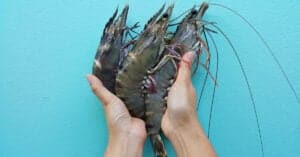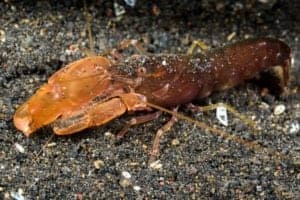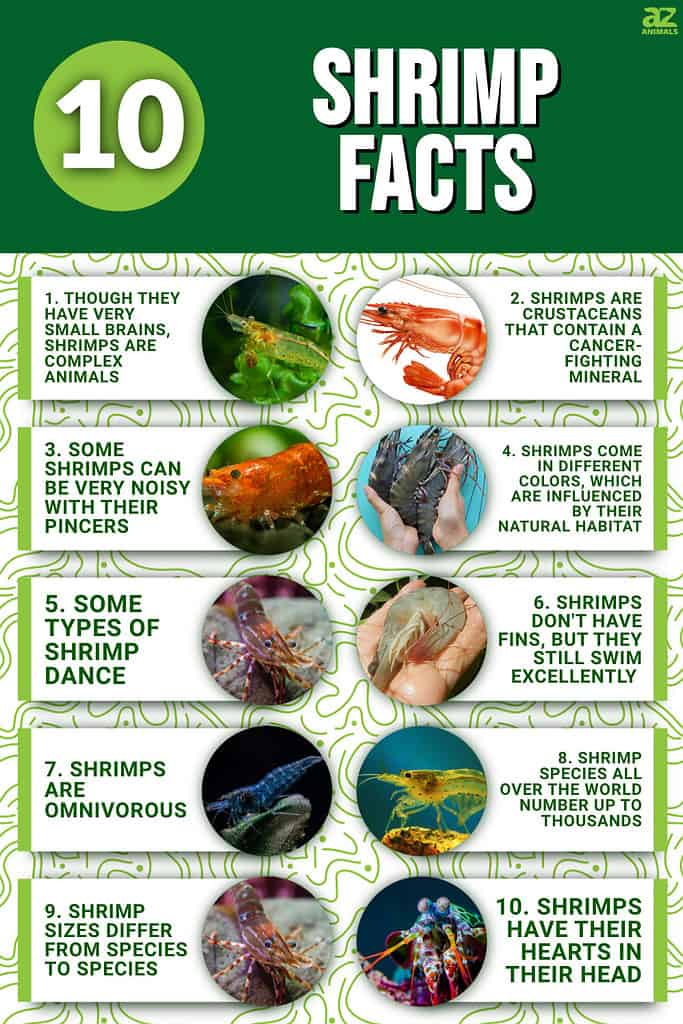
Shrimps are swimming crustaceans with ten legs, categorized under the Caridea order. They have a body that is compressed from one side to another, lamellar hills, fan-like tails, an outer skeleton that is thin and transparent, and long antennae. They are present in both freshwater and saltwater bodies throughout the world. These sea dwellers are vital in the food chain as they serve as a food source for many larger animals, including fish and whales.
Even though these coastal crustaceans are the favorite seafood of every average American, there are still many things we don’t know about them. Below are ten amazing facts about shrimp.
1. Though they have very small brains, shrimps are complex animals

Reports have shown that the cleaner shrimps eat dead scales and parasites off the skin of living fish.
©SritanaN/Shutterstock.com
Reports have shown that the cleaner shrimp eat dead scales and parasites off the skin of living fish. But more than what they eat, how they do it is fascinating. These animals have been found to do a choreographed dance to entice other fish to get close enough to feed on them or ‘clean’ them. The size of the other fish usually doesn’t matter, as sometimes they are two times the size of the shrimp.
2. Shrimps are crustaceans that contain a cancer-fighting mineral
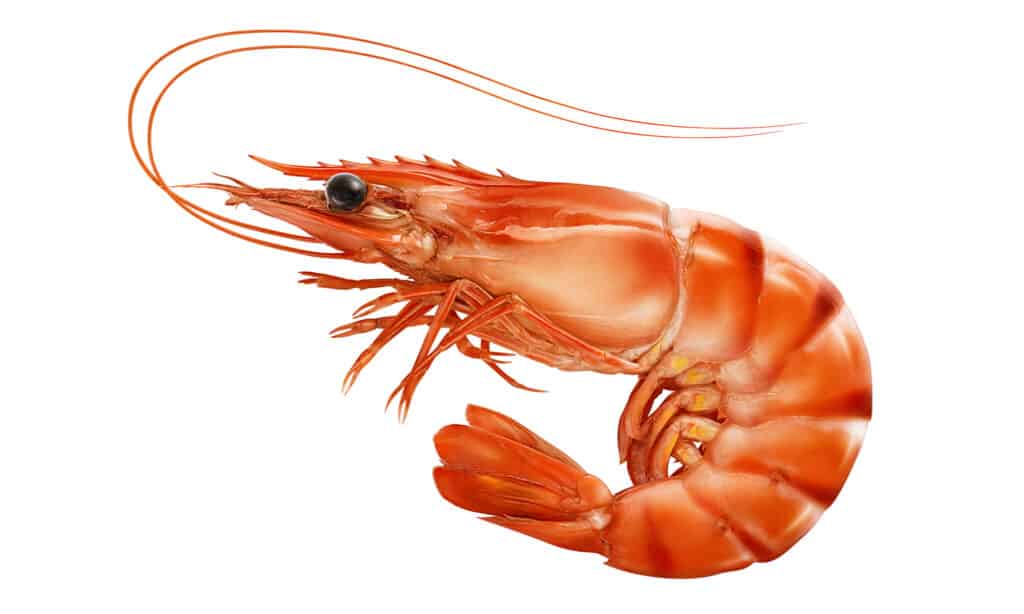
Shrimps are high in selenium, an antioxidant mineral.
©Kovaleva_Ka/Shutterstock.com
Shrimps are high in selenium, an antioxidant mineral that stimulates enzymes to combat cancer-causing free radicals and inhibit tumor growth. This is one fact you should keep in mind. Including the small crustacean in your diet may lower your cancer risk.
3. Some shrimps can be very noisy with their pincers

Some shrimp species may produce sound.
©DavidTing/Shutterstock.com
Certain shrimp species may produce sounds stronger than any other sea creature, making a noise that is louder than a gunshot or a jet engine with their claws. The water may appear quiet, but it may become quite loud beneath the surface when snapping shrimp are present. Submarines in the Navy have been known to hide among beds of snapping shrimp to avoid being detected by radar. The belief is that they do this to interact with other shrimp or simply to stun their prey.
4. Shrimps come in different colors, which are influenced by their natural habitat
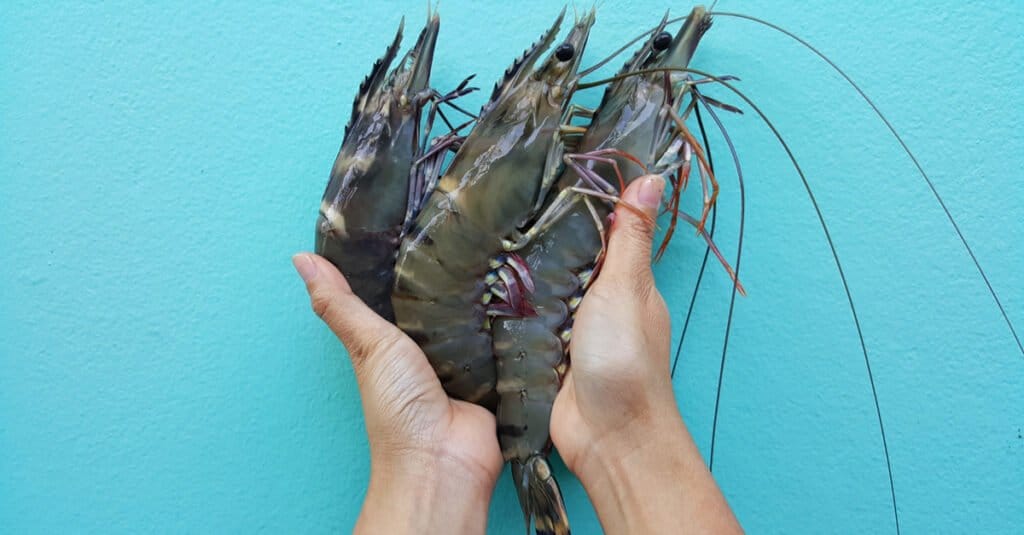
Shrimp habitats are quite diverse, with a vast range of colors, brightness, and designs.
©Koy_Hipster/Shutterstock.com
Shrimp habitats are quite diverse, with a vast range of colors, brightness, and designs. Decapod crustaceans, like other invertebrates, have been discovered to have the capacity to change color over short and long periods. In the first case, the change may be in seconds, minutes, or hours, while the second case is connected with phenotypic plasticity and development.
Some shrimp subspecies can change their color to blend in with their environment. Shrimp in tropical and subtropical environments have vibrant colors. Others are transparent, making it difficult for predators to notice them. In muddy river beds, you can find shrimp in brown and green colors.
5. Some types of shrimp dance
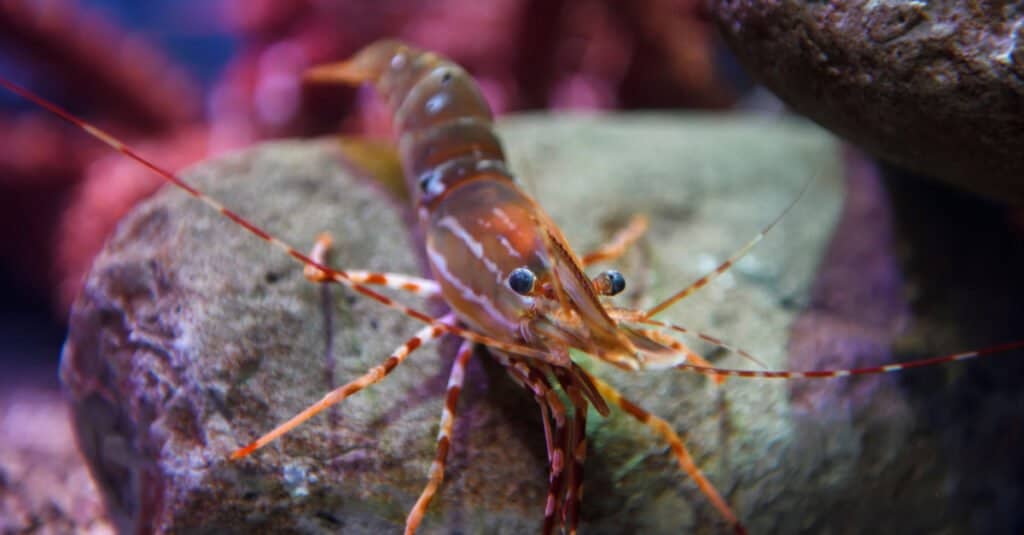
Cleaning shrimp perform a brief dance, accompanied by the motion of their white antennae, to attract fish.
©Reimar/Shutterstock.com
Cleaning shrimp make a short dance while waving their white antennae to entice fish. They reside in small crevices or caves on Australia’s coastal reefs, where they serve as what is known as “cleaning stations.” Different kinds of fish come to the area to cleanse themselves of disease-causing parasites, which is something the shrimp eat for free.
One or more shrimp move towards the possible creature as they arrive, swaying side-to-side in a dance that indicates the shrimp are ready for cleaning. A cleaner shrimp successfully charms a new type every time it dances. Because some fish are more sensitive to moving things, the shrimp’s dance may make them more noticeable to fish looking to be cleaned.
6. Shrimps don’t have fins, but they still swim excellently
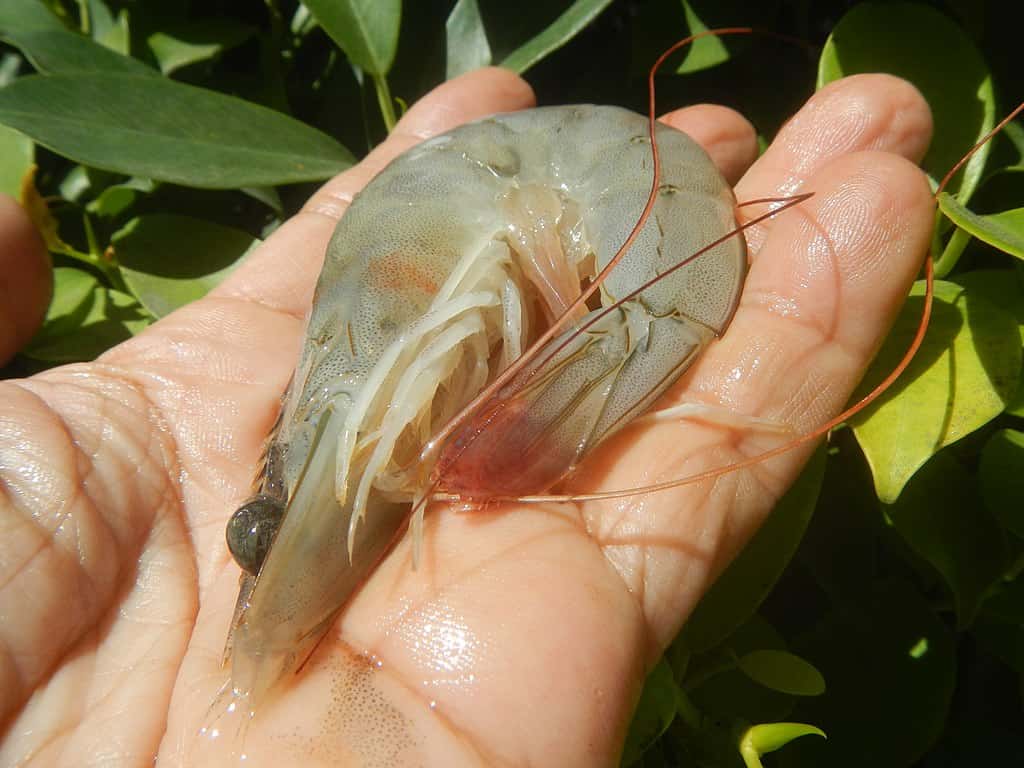
Shrimp are great swimmers although they do not have fins.
©Judgefloro, CC0, via Wikimedia Commons – License
Shrimp are quite adept swimmers, which may be surprising considering that they do not have fins like fish. By flexing the muscles of their belly and tail, they may propel themselves swiftly. They, however, swim backward due to their body structure.
They can swim forward with their appendages under their tails, but this movement is slower than swimming backward.
7. Shrimps are omnivorous

Shrimps eat any kind of natural food that fits in their mouths.
©Shrimplake/Shutterstock.com
Shrimp eat a large number of foods, which depend on their level or stage of development. They can eat a lot of different things because they are scavengers. Shrimp eat any kind of natural food that fits in their mouths.
In the larval stage, they are extremely small and float on the water’s surface. Because they have limited mobility and are so small, they feed other small organisms that drift around with them, primarily algae and plankton.
Grown shrimp are scavengers, roaming on the ocean floor and devouring organic debris for nourishment. This means that their diets are influenced by their location. Plant materials, clams, dead fish, crabs, snails, worms, and other decomposing organic waste found in the ocean are all eaten by wild shrimp.
These animals also sift the water around them or across the ocean floor to absorb minute plant and animal materials. Some shrimp species also capture and eat small fish.
8. Shrimp species all over the world number up to thousands
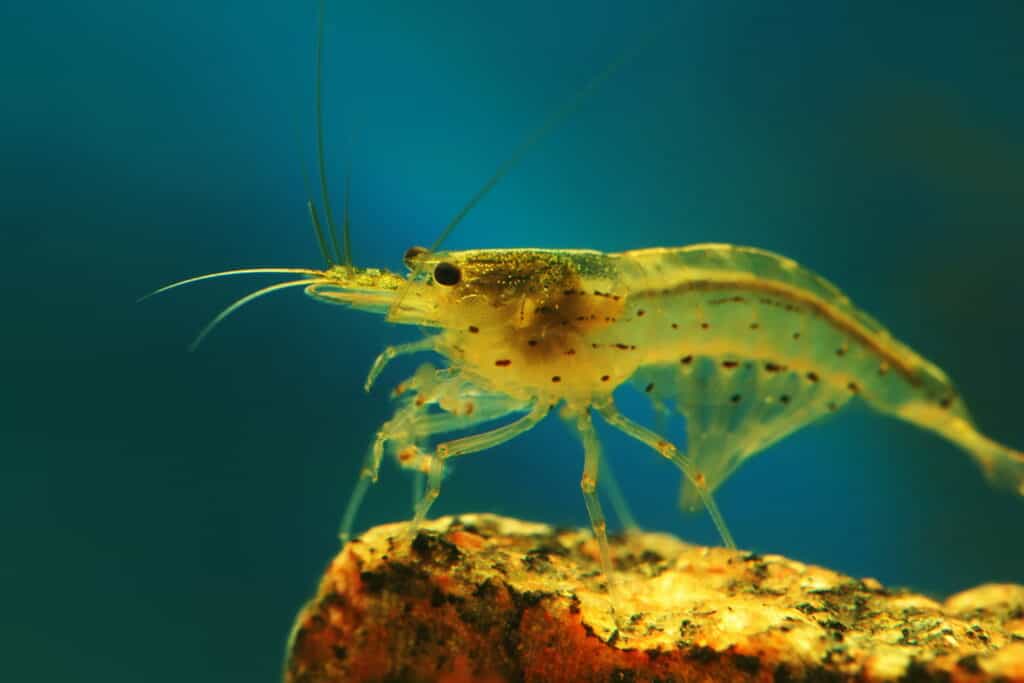
While they originated in East Asia, today you can find Amano shrimp in aquariums all over the world.
©Grigorev Mikhail/Shutterstock.com
From tropical regions to the Antarctic Ocean, approximately 2,000 separate shrimp species are found worldwide and in every known marine habitat. However, only a small percentage of them are available commercially. They are divided into four categories: white, red, brown, and pink, and each can be one of several species.
9. Shrimp sizes differ from species to species

Larger shrimps, generally known as prawns, are usually the targets in a commercial sense.
©Reimar/Shutterstock.com
Shrimp aren’t always as shrimpy as they appear. While little shrimp are typically 12 inches long, other types can reach 12 inches or larger. The tiger shrimp, found in the Gulf, can be as large as the length of an adult’s arm and possess more tail meat than a regular lobster.
Larger shrimps, generally known as prawns, are usually the targets in a commercial sense. The world’s largest prawn, the jumbo tiger prawn, is found in nearby seas. It may grow up to 13 inches in length and has light and dark stripes on its tail that make it instantly identifiable.
10. Shrimps have their hearts in their head
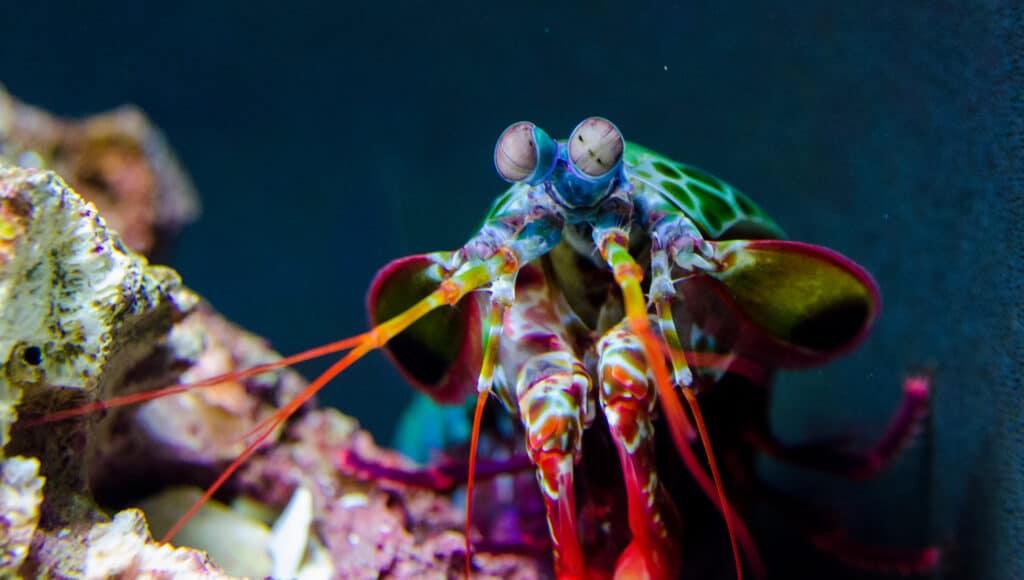
Shrimp have hearts in their heads.
©Maxfield Weakley/Shutterstock.com
The heart of a shrimp is situated in its head. Following the actual anatomy, the heart is in the thorax, next to the head. However, since the head and the thorax are both enclosed by the same exoskeleton, the thorax is sometimes considered part of the head.
In the general sense, following the idea that a shrimp is divided into just the head and tail, it can be said that the animal’s heart is on its head.
The photo featured at the top of this post is © Reimar/Shutterstock.com
Thank you for reading! Have some feedback for us? Contact the AZ Animals editorial team.



